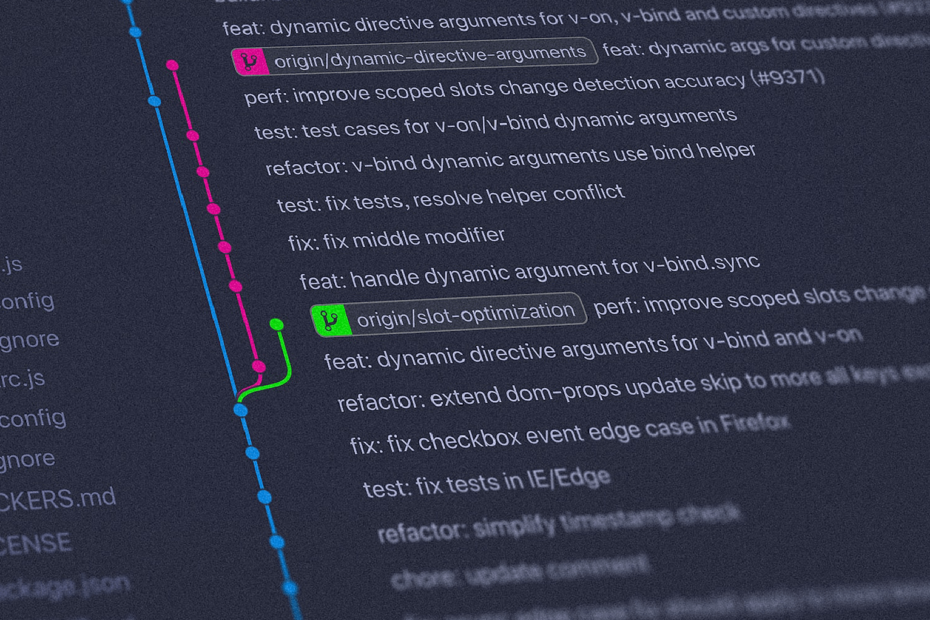Introduction
Git, a widely used distributed version control system, has transformed how developers communicate and maintain their codebases. The capacity to construct and maintain branches is a critical component of Git. While it is critical to create branches for collaborative work, it is also necessary to remove superfluous remote branches to maintain your repository organised and efficient.
In this tutorial, we will go through how to delete remote branches in Git. Whether you’re a seasoned developer or new to Git, this tutorial will provide you with the knowledge and expertise you need to efficiently manage your remote branches.
Git Delete Remote Branch – How to Remove a Remote Branch in Git
Understanding Remote Branches
Before we go into the procedure of delete remote branche, let’s first define them and their relevance in Git.
Remote branches are references to branches in another repository. They let teams to collaborate by sharing code modifications without affecting the main source. Each team member can have their own remote branch that they can work on individually before merging the changes back into the main branch.
In Git, you can view your remote branches using the command:
git branch -rThe Importance of Deleting Remote Branches
Because of constant development and cooperation, a Git repository can amass a large number of remote branches over time. While some branches are required for continuing work, others become obsolete after changes are merged or tasks are completed. Keeping an excessive number of remote branches might cause the repository to become cluttered and difficult to explore.
Here are some reasons why deleting remote branches is important:
Keeping Your Repository Clean: Removing superfluous branches keeps your repository clean and organised.
Improving Performance: A large number of remote branches might cause certain Git processes to slow down, making repository administration less efficient.
Reducing Conflicts: Outdated branches can lead to conflicts in future merges. Getting rid of them decreases the likelihood of unwanted fights.
Security and privacy: Remote branches may hold sensitive information. You lessen the danger of revealing sensitive information by removing superfluous branches.
Verifying Branch Status
Before deleting a remote branch, it’s essential to verify its status and ensure that you are not removing any active or critical branches.
To check the status of remote branches, use the command:
git branch -r
Examine the list of branches and select the one you wish to eliminate. Check to see if the branch is no longer needed and has been merged or completed.
Deleting a Remote Branch
To delete a remote branch in Git, follow these steps:
Step 1 – Fetch the Remote Branches:
Before deleting a remote branch, make sure your local repository is up-to-date by fetching the latest changes from the remote repository:
git fetch --all
Step 2 – Verify Local Branches:
To ensure that you are on the correct branch, list all local branches:
git branch
Step 3 – Delete the Remote Branch:
Use the following command to delete the remote branch:
git push <remote_name> --delete <branch_name>
Replace with the name of the remote repository (e.g., origin) and with the name of the branch you want to delete.
Handling Errors and Exceptions
While deleting remote branches, you may encounter certain errors or exceptions. Let’s address some common issues and their solutions:
“Error: unable to delete’branch_name’: remote ref does not exist”
When Git cannot locate the specified branch on the remote repository, this error occurs. Check that the branch name is correct and that it exists in the remote repository.
“Error: Unable to Push to Unqualified Destination”
This issue usually happens when you attempt to delete a branch that is not part of the remote repository. Check that you have the correct remote and branch names.
“Error: unable to delete ‘branch_name’: remote ref does not support deletion”
This error indicates that the remote repository does not permit branch deletion. In this instance, you may require administrative rights or should contact the repository administrator.
Best Practices for Deleting Remote Branches
To avoid unintentional data loss or disruptions, remote branches must be deleted with caution. For a smooth branch deletion operation, follow following best practises:
Examine Branch Status: Before deleting a branch, be sure it is no longer needed and has been successfully merged or completed.
Backup Critical Data: Back up any critical data in the branch before deleting it to avoid data loss.
Team Members Should Be Informed: To avoid confusion, notify your team members before removing a remote branch.
Use Descriptive Branch Names: Give your branches meaningful names to help you recognise their role.
Regular Maintenance: Schedule regular remote branch cleanups to maintain the repository tidy and efficient.
Frequently Asked Questions (FAQs)
Can I recover a deleted remote branch?
While Git automatically retains deleted branches for a limited time, it’s recommended to have backups of important branches to ensure recovery if needed.
Do deleted remote branches affect the main branch?
No, deleting remote branches does not affect the main branch or any other active branches. It only removes the specified branch from the remote repository.
Can I delete multiple remote branches at once?
Yes, you can delete multiple remote branches simultaneously using the git push command with multiple branch names.
What happens if a deleted remote branch still appears in the list of branches?
Deleted branches may still appear in the list if the local repository is not up-to-date with the remote repository. Perform a git fetch –all to update the local repository.
Related Articles
Comprehensive Guide: How To Backup And Restore MongoDB Database
NoSQL Vs SQL: Understanding The Differences And Choosing The Right Database For Your Needs
A Simple Solution For Displaying Cookie Consent Messages On Websites
MongoDB Interview Questions And Anwers
Conclusion
Every Git user must be able to manage remote branches. You can keep your Git repository organised, efficient, and safe by knowing the process of deleting remote branches and adhering to best practises. Keep in mind to double-check branch status, handle issues with caution, and communicate with your team during the branch deletion process.






